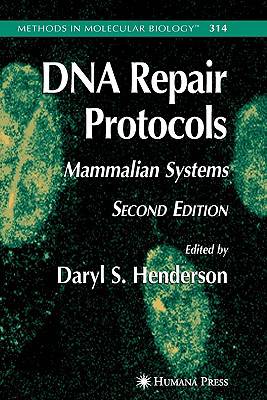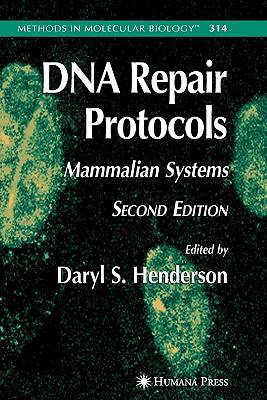
- Afhalen na 1 uur in een winkel met voorraad
- Gratis thuislevering in België vanaf € 30
- Ruim aanbod met 7 miljoen producten
- Afhalen na 1 uur in een winkel met voorraad
- Gratis thuislevering in België vanaf € 30
- Ruim aanbod met 7 miljoen producten
Zoeken
DNA Repair Protocols
€ 202,95
+ 405 punten
Omschrijving
The first edition of this book, published in 1999 and called DNA Repair Protocols: Eukaryotic Systems, brought together laboratory-based methods for studying DNA damage and repair in diverse eukaryotes: namely, two kinds of yeast, a nematode, a fruit fly, a toad, three different plants, and human and murine cells. This second edition of DNA Repair Protocols covers mammalian cells only and hence its new subtitle, Mammalian Systems. There are two reasons for this fresh emphasis, both of them pragmatic: to cater to the interests of what is now a largely mammalocentric DNA repair field, and to expedite editing and prod- tion of this volume. Although DNA Repair Protocols: Mammalian Systems is a smaller book than its predecessor, it actually contains a greater variety of methods. Fourteen of the book's thirty-two chapters are entirely new and areas of redundancy present in the first edition have been eliminated here (for example, now just two chapters describe assays for nucleotide excision repair [NER], rather than seven). All eighteen returning chapters have been revised, many of them ext- sively. In order to maintain a coherent arrangement of topics, the four-part p- titioning seen in the first edition was dispensed with and chapters concerned with ionizing radiation damage and DNA strand breakage and repair were re- cated to near the front of the book. Finally, an abstract now heads each chapter.
Specificaties
Betrokkenen
- Uitgeverij:
Inhoud
- Aantal bladzijden:
- 498
- Taal:
- Engels
- Reeks:
- Reeksnummer:
- nr. 314
Eigenschappen
- Productcode (EAN):
- 9781617376115
- Verschijningsdatum:
- 19/11/2010
- Uitvoering:
- Paperback
- Formaat:
- Trade paperback (VS)
- Afmetingen:
- 152 mm x 229 mm
- Gewicht:
- 752 g

Alleen bij Standaard Boekhandel
+ 405 punten op je klantenkaart van Standaard Boekhandel
Beoordelingen
We publiceren alleen reviews die voldoen aan de voorwaarden voor reviews. Bekijk onze voorwaarden voor reviews.










